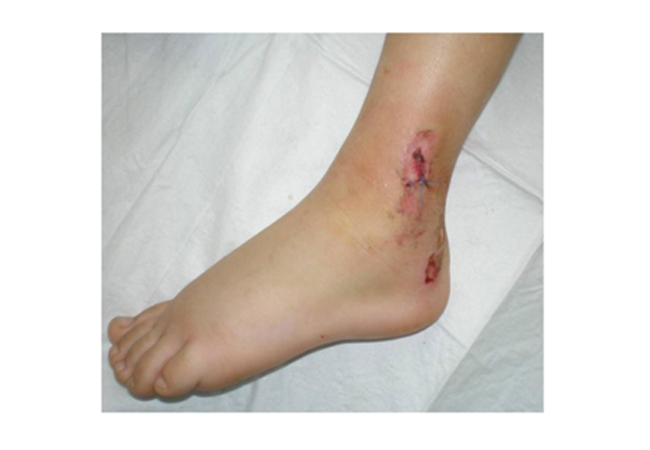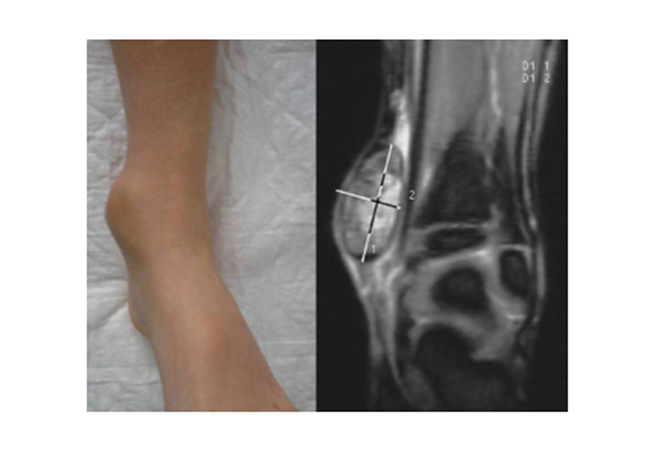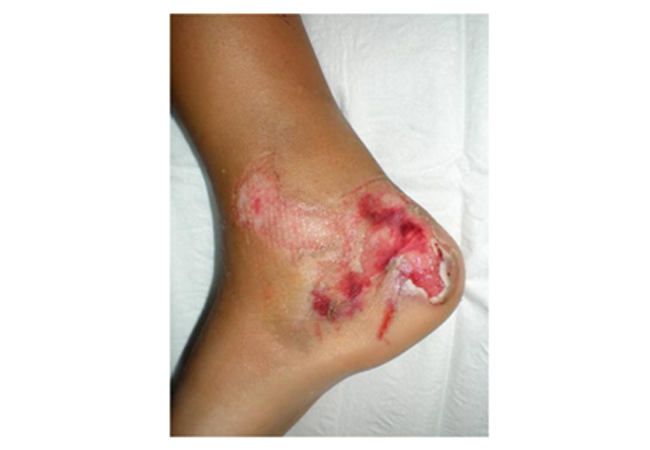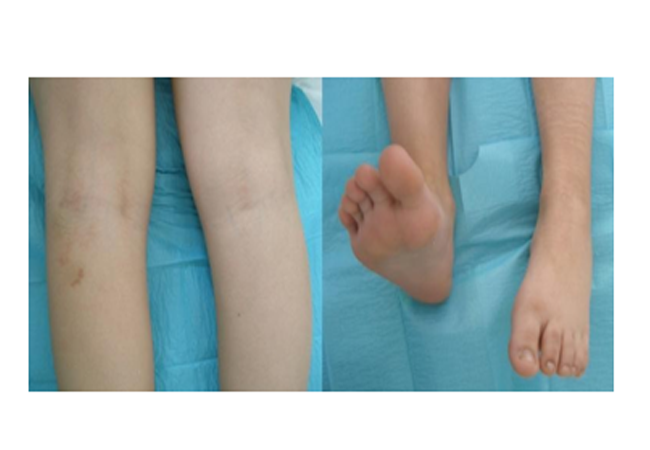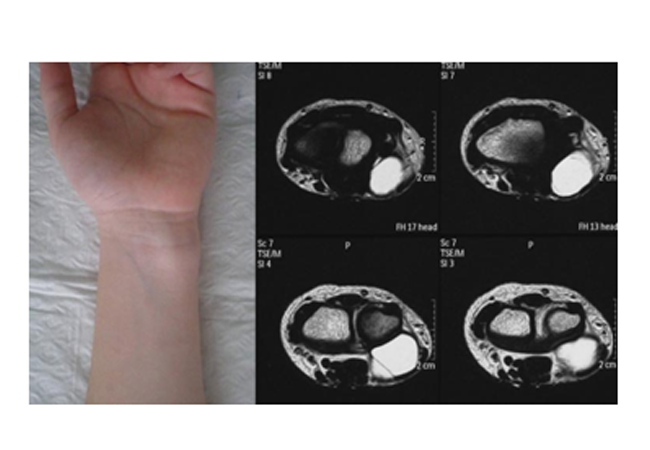Information
Journal Policies
Soft Tissue Injuries Due To Bicycle Parts in Children
N. K. Sferopoulos
Copyright : © 2016 Sferopoulos N. K. This is an open access article distributed under the Creative Commons Attribution License, which permits unrestricted use, distribution, and reproduction in any medium, provided the original work is properly cited.
Editorial
Bicycle riding is a popular toy and recreation among children, but it is also used for physical fitness and sports. Bicycle use and accidents are more common among children than in adults. An increased and widened spectrum of traumatic and non-traumatic or overuse bicycle riding injuries has been reported [1, 2].
Traumatic injuries from bicycle parts are very common in children. They may include entrapment in or compression by various components such as the spokes, frame, handlebars, saddle, chain and gears, wheels and mudguards, pedals and brakes [3-6].
Bicycle spoke injury is the most common cycling-related injury. It is due to foot entrapment in the spokes of the bicycle's rotating wheel, resulting in a variety of injuries. It may include soft tissue injuries as well as fractures of the tibia, fibula or foot bones. There is no universally accepted classification for such injuries. Soft tissue damage is the most important prognostic factor in the healing of a bicycle spoke injury [7]. Soft tissue injuries are divided into three categories: bruising without laceration, bruising and superficial abrasions, and full thickness skin defects. Injuries may be deeper than they first appear. Severe soft tissue injuries usually affect the posterolateral aspect of the ankle and extend to the Achilles tendon. Bicycle spokes can cause injuries resulting in a combination of devascularisation, internal degloving, and contamination. Reassessment after 48 hours provides better evaluation of the wound. Multiple debridements may be necessary to prevent contamination [8- 12].
A relatively large number of children are injured while riding a bicycle sitting behind the cyclist. The right foot is usually closer to the wheel in the left side-saddle position and hence more commonly injured. The usual injuries include superficial soft tissue abrasions, contusions or lacerations, crushing of the foot and shearing injuries, while amputations of toes or fractures of the distal tibia and fibula are encountered in the most severe cases [13, 14].
Direct impact handlebar injuries, usually during a fall, account for a significant proportion of bicycle- related injuries (Figure. 1). Although bicycle handlebar injuries may occur at relatively low speeds, the transfer of energy from the end of the handlebar, with a small cross-sectional area, to a small field may lead to injuries that are more severe than predicted, since they may be occasionally associated with visceral or vascular penetration. Thus, bicycle handlebar injuries of the abdominal wall should be considered as a serious injury until proven otherwise [15-18].
Other potentially hazardous sites include the chain (Figure. 2) and gears that are located on the right side of all types of bicycles, the pedals (Figure. 3), the space between the chain and the back wheel and the space between the wheels and their mudguards (Figure. 4) [19-20].
Common peroneal neuropathy following a bicycle injury has been previously presented in an 11-year- old girl. It resulted from compression of her left knee between the chain stay and the crank arm on the left side of the bicycle. On clinical examination bruising and superficial abrasions, but without laceration, of the posterolateral aspect of the left knee was evident. There was also marked weakness of the left ankle and toe dorsiflexion, as well as ankle eversion producing a foot drop (Figure. 5). The report concluded that the space between the chain stay and the crank arm on the left side should be also recognized as potentially hazardous to entrap a rider’s knee or leg [21].
Non-traumatic or overuse bicycle injuries may affect both experienced cyclists and novices. They are usually localized to the knee, neck/shoulder, wrist/hand, buttocks and perineum. Riding with too much pedal resistance is a major cause of overuse problems. They usually involve the appearance of a ganglion cyst (Figure. 6). They may also appear with a wide variety of compressive or entrapment lesions of peripheral nerves, most likely the ulnar and median nerves, as well as pudendal nerve pressure neuropathy affecting the genitourinary system [22-27].
Education on injury mechanisms, severity, and preventive measures is important [28, 29]. Several proper mechanical adjustments and modifications have been proposed to reduce the incidence of bicycle parts induced injuries. A proper bicycle fit has to do with the saddle, handlebars, brake levers and hoods, stem and, most importantly, shoes, cleats and pedals. A biomechanical study suggested that a mesh protective cover could be used to prevent the foot from slipping between the spokes, and a plastic shield to bridge the gap between the fork and the horizontal upright. These modifications could substantially decrease the incidence of bicycle spoke injuries [8]. To prevent bicycle spoke injuries spoke guards and foot rests should also be used and children driving or being carried on a bicycle should wear proper shoes. Protection is also required to prevent the chain from entrapping a trouser leg and soiling the cyclist’s leg or clothing using a chain guard or case. "Doubling" is dangerous and should be prohibited where seats and spoke guards are not available. Injuries associated with bicycle- towed child trailers and bicycle-mounted child seats have also been reported [30]. Finally, precautions to prevent or reduce the incidence of trauma, i.e. using safer handlebar designs, wearing padded cycling gloves and advising frequent changes of hand position, padding in the saddle and wearing riding shorts to prevent saddle irritation, should be undertaken by both experienced and inexperienced cyclists [27].
Conflict of Interest Statement
The author certifies that he has no commercial associations (such as consultancies, stock ownership, equity interest, patent/licensing arrangements, etc) that might pose a conflict of interest in connection with the submitted article. The author received no financial support for this study.
References
- Mellion MB. Common cycling injuries. Management and prevention. Sports Med. 1991; 11: 52– 70.
- Pfeiffer RP, Kronisch RL. Off-road cycling injuries. An overview. Sports Med. 1995; 19: 311– 25.
- Bicycle frame. in: Wikipedia, the free encyclopedia. Available from: URL: http://en.Wikipe die.org/wiki/Bicycle.
- Brown S: Extensive online bicycle glossary. Available from: URL: http:// sheldonbrown. com/gloss_ch.html.
- Brown RL, Koepplinger ME, Mehlman CT, Gittelman M, Garcia VF. All-terrain vehicle and bicycle crashes in children: epidemiology and comparison of injury severity. J Pediatr Surg. 2002; 37(3): 375–80.
- Briton JW. Kids can’t fly: preventing fall injuries in children. WMJ. 2005; 104(1): 33–6.
- Segers MJ, Wink D, Clevers GJ. Bicycle-spoke injuries: a prospective study. Injury. 1997; 28(4): 267–9.
- D’Souza LG, Hynes DE, McManus F, O'Brien TM, Stephens MM, Waide V. The bicycle spoke injury: an avoidable accident? Foot Ankle Int. 1996; 17(3): 170–3.
- Roffman M, Moshel M, Mendes DG. Bicycle spoke fracture. Clin Orthop Relat Res. 1979; 144: 230–2.
- Roffman M, Moshel M, Mendes DG. Bicycle spoke injuries. J Trauma. 1980; 20(4): 325-6.
- Agarwal A, Pruthi M. Bicycle-spoke injuries of the foot in children. J Orthop Surg (Hong Kong). 2010; 18(3): 338-41.
- Mak CY, Chang JH, Lui TH, Ngai WK. Bicycle and motorcycle wheel spoke injury in children.J Orthop Surg (Hong Kong). 2015; 23(1): 56-8.
- Griffiths DM, MacKellar A. Bicycle-spoke and "doubling" injuries. Med J Aust. 1988; 149(11- 12): 618-9.
- Subrahmanyam M. Bicycle injury pattern among children in rural India. Trop Geogr Med. 1984; 36(3): 243-7.
- Nataraja RM, Palmer CS, Arul GS, Bevan C, Crameri J. The full spectrum of handle bar injuries in children: a decade of experience. Injury. 2014; 45(4): 684-9. doi: 10.1016/j.injury.2013.07.022. Epub 2013 Dec 8.
- Nadler EP, Potoka DA, Shultz BL, Morrison KE, Ford HR, Gaines BA. The high morbidity associated with handlebar injuries in children. J Trauma. 2005; 58(6): 1171-4.
- Prada Arias M, Dargallo Carbonell T, Estévez Martínez E, Bautista Casasnovas A, Varela CivesR. Handlebar hernia in children: two cases and review of the literature. Eur J Pediatr Surg. 2004; 14(2): 133-6.
- Winston FK, Weiss HB, Nance ML, Vivarelli-O'Neill C, Strotmeyer S, Lawrence BA, Miller TR. Estimates of the incidence and costs associated with handlebar-related injuries in children. Arch Pediatr Adolesc Med. 2002; 156(9): 922–8.
- Cherington M. Hazards of bicycling: from handlebars to lightning. Semin Neurol. 2000; 20(2): 247–53.
- Nazri MY, Hafiz A, Yusof A, Khalid KA, Aminudin CA. Cycle spokes and chain related injuries in children-emerging injuries in Malaysia. Med J Malaysia. 2005; 60 Suppl C: 11-3.
- Sferopoulos NK. Compression peroneal neuropathy following a bicycle injury in a child. Med Sci Monit. 2010; 16(4): CS45-9.
- Dettori NJ, Norvell DC. Non-traumatic bicycle injuries: a review of the literature. Sports Med.2006; 36(1): 7–18.
- Andersen KV, Bovim G. Impotence and nerve entrapment in long distance amateur cyclists.Acta Neurol Scand. 1997; 95(4): 233–40.
- Patterson JM, Jaggars MM, Boyer MI. Ulnar and median nerve palsy in long-distance cyclists. A prospective study. Am J Sports Med. 2003; 31(4): 585–9.
- Leibovitch I, Mor Y. The vicious cycling: bicycling related urogenital disorders. Eur Urol. 2005; 47(3): 277–86.
- Sommer F, König D, Graft C, Schwarzer U, Bertram C, Klotz T, Engelmann U. Impotence and genital numbness in cyclists. Int J Sports Med. 2001; 22(6): 410-3.
- Carpes FP, Dagnese F, Kleinpaul JF, Martins Ede A, Mota CB. Bicycle saddle pressure: effects of trunk position and saddle design on healthy subjects. Urol Int. 2009; 82(1): 8-11. doi: 10.1159/000176017. Epub 2009 Jan 20.
- González Landa G, Sánchez Ruiz I, Santos Terrón MJ, Rodríguez Delgado T, Busturia Gimeno P, Hermana Tezanos T. Prevention of bicycle accidents in children. An Esp Pediatr. 1990; 32(2): 131-5.
- Pless IB. Editorial. Bicycle injuries and injury prevention. Chronic Dis Inj Can. 2014; 34(2-3): 71-3.
- Powell EC, Tanz RR. Tykes and bikes: injuries associated with bicycle-towed child trailers and bicycle-mounted child seats. Arch Pediatr Adolesc Med. 2000; 154(4): 351-3.






